Mike Liebhold, Senior Researcher at IFTF

Cool Tools Show 213: Mike Liebhold
Our guest this week is Mike Liebhold. Mike is a Distinguished Fellow and Senior Researcher at the Institute For the Future, exploring future technology systems, working with clients, global leaders, researchers, and public groups. Mike’s a pioneer and veteran with decades of experience as a senior researcher for iconic companies like Atari, Apple, Netscape, and Intel. You can find him on Twitter @mikeliebhold.
Subscribe to the Cool Tools Show on iTunes | RSS | Transcript | See all the Cool Tools Show posts on a single page
Show notes:
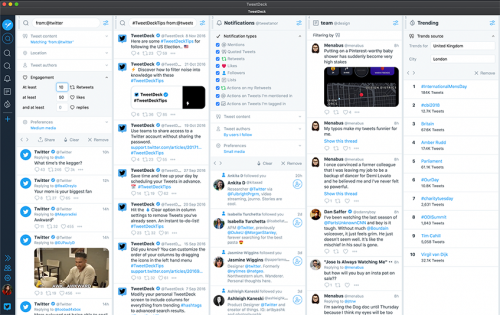
Google and TweetDeck advanced search tools
For a long time my favorite setup was an app called Flip Board, that dynamically created a personal magazine. But they ran into a real financial problem with the bottom line, and started spamming way too many ads. I’ve reverted back to Twitter’s Tweet Deck. But all of these search tools really kind of rely on a fundamental understanding of some really basic search tools. Because Google News is not the place for me to aggregate information anymore, Twitter’s where I aggregate information. My tools for Google search are the advanced search operators, like the minus sign for a term that I really don’t want. I would have, “Nano -chemistry”. If I wanted to talk about nano engineering without the chemical references. The minus would take the “chemistry” references out of the search. It’s a different set of search tools for Twitter. The main thing I do is curate lists of experts. When I find a scientist or academic, I look for who they’re following. One of my great tricks is, people don’t realize that you can add people to a list without following them. Then if you view a list, you get all of the tweets from that person. I follow networks of scientists, networks of authors. Networks of many different domains. That is one of the key tricks. I keep many channels on Tweet Deck for different lists. I have curated streams. The way I use Twitter is segregated into, at any time, 15 or 20 topical channels, and they auto fill. I don’t use Twitter as a social medium. I use other media as social media. Twitter is just an information engine for me.
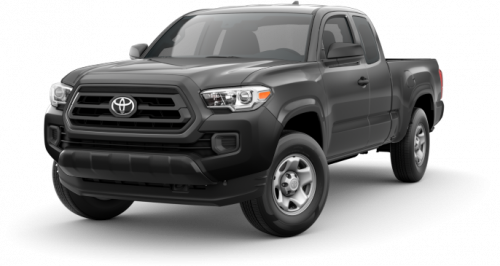
2020 Tacoma SR pickup truck
All my free time is spent outdoors. I use the lowest end Toyota four wheel drive truck you can get. The SR pickup truck. It’s four cylinders, and it doesn’t have any of the elegant packages. It is in fact built on the identical platform of a truck I reviewed in Cool Tools many years ago, a 1994 Toyota base model four by four, that got 240,000 miles on it. This is the replacement. I drive it like a tractor. I throw stuff in it, and I still can get on the freeway, and it’s comfortable. It’s got a much better sound system, and more comfortable seats than the other one. Plus, I calculated the cost of this truck compared to the truck I bought in ’94 for $19,000. This one’s $24,000. But at the rate of inflation, this is about 30 percent cheaper than the truck I bought back in 1994.
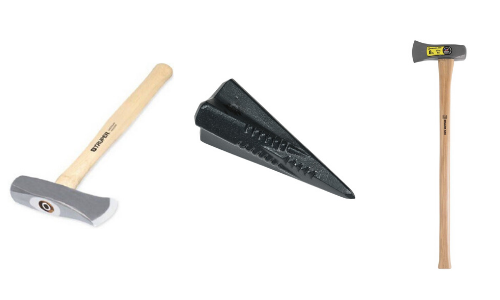
Firewood splitting tools:
Seymour S400 Jobsite Grenade Style Wood Splitting Wedge
Truper Splitting Maul, 3-Lb
Collins 34 in. L x 8 lb. Forged Steel Single Bit Splitting Maul
We’re up on a ridge, and we get these great southern 40 mile an hour gusts every time there’s a storm. There’s a lot of brush and pine branches. I’m lucky that I get a lot of windfall firewood. I just go out and buck up on madrone or oak, and throw it in the truck. I really enjoy splitting firewood myself, rather than a mechanical splitter, which is just too easy. The Seymour Wedge will just neatly split the wood into four pieces. It’s magical, and very satisfying. For the tough ones, then I’ll get an eight pound sledge and really split it.
The Truper Splitting three-pound maul is just like a heavy hammer. It’s pretty easy to work with. It’s not the kind of giant sledge you have to lift way over your head and hammer it. It is more like a carpentry hammer. A little bit heavier. It’s very easy to use with a good wedge, for soft woods like pine, for kindling. Or for heavier woods with a really good wedge, that are still green enough to split well. Then I use the Collins eight-pound maul, which is a sledge hammer on one side, and a splitting wedge on the other side, for wood that’s harder to split. Seasoned madrone is a little harder to split, and eucalyptus is incredibly difficult. I’ve given up on eucalyptus. But sometimes you can’t apply enough pressure with a three pound maul, so I’ll drop the heavy hammer on it. Very satisfying. I sit out there with a beer and I put on KPIG on the radio, and split wood. It’s kind of my comfort zone out there, on a beautiful day.
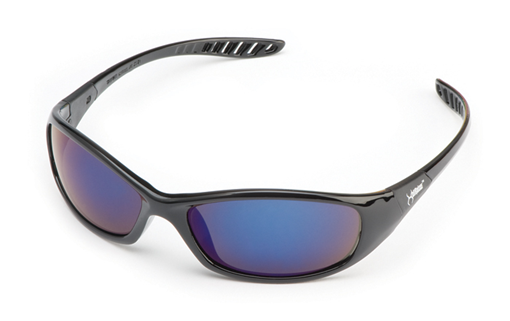
Stihl HellRaiser Glasses
Stihl, the chainsaw brand, actually sells very cheap safety glasses. But they’re styled like really cool Ray Ban glasses. They’re super cheap. They sell for between $11 and $19 at your local hardware store. They’re really good safety glasses. They’re comfortable, and replaceable if they get lost or damaged working outdoors all the time. They’re great for general use as sunglasses too. I buy two or three at a time in case I lose them. I can leave one in the car, one in the house, and one in the garage.
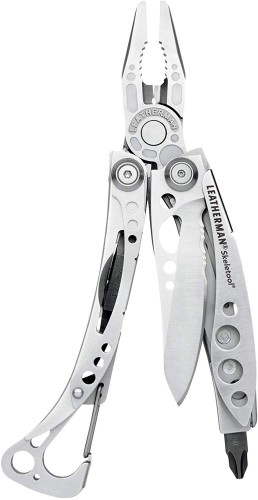
Leatherman Skeletool
I keep a Leatherman Skeletool clipped on the belt loop of my Levis. It is the lightest utility tool I have ever owned. It is the bare minimum. It’s needle nose pliers, wire clippers, two heads of screw drivers, and a cutting knife. All on a simple carabiner that snaps on your jeans, and will also open a beer bottle for you. It’s way easier and lighter, and less bulky than these Swiss Army Knife tools that have got 55 different capabilities you never use. I’ve had three of these over the years. This is the one. It’s five ounces, and just the right combination of tools for everything I’m doing. I use the needle nose for retrieving lost hardware that falls down. If you’ve got a washer or something that falls down somewhere. I use the knife all the time as just a utility knife for everything. I’m always using it for something. The screwdrivers seem to work for just about everything, repairing anything around the house. Taking a light fixture apart. Any kind of mechanical, or repairing a tool. Putting together a toy kit for the grandchildren. All of the above.
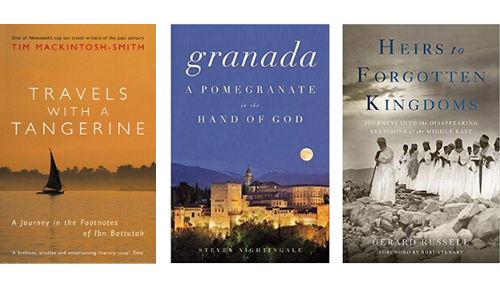
Current favorite non-fiction books about ancient mideastern cultures:
Travels with a Tangerine: A Journey in the Footnotes of Ibn Battutah
Granada: A Pomegranate in the Hand of God
Heirs to Forgotten Kingdoms: Journeys Into the Disappearing Religions of the Middle East
Lately I’ve been attempting to do an attitude adjustment in thinking about the Middle East. I’m fascinated with ancient history, and I’ve read lots of books about the Silk Road in central Asia. But recently I’ve been trying to understand more deeply the Islamic cultures, and most recently Andalusia in southern Spain. Which up until 1492 was a caliphate. It was a time of incredible harmony among Muslims, Jews, and Christians. It was a time of cultural blossoming, really before the Renaissance. There’s a book I recommend called Grenada: A Pomegranate In the Hand of God. The story of Al-Andalus and the Convivencia. It’s really astounding. I used the book as a guide and toured the Arabic and the medieval Islamic Andalusia last year with my wife. It was just a stunning eye opener to see Europe from a totally different perspective. Then likewise, Timothy Mackintosh-Smith is one of my all time favorite authors. I’ve read many of his books. But Travels With A Tangerine is one of his most astounding books. He followed the footsteps of Ibn Battuta, who was an erudite journalist and author working for the sultan of the Maghreb in Morocco, and I think Al-Andalus as well. He traveled all across northern Africa, into the Middle East. Up into the Black Sea. All the way down the Arabic Peninsula. Across the Indian Ocean, into India and China, and wrote journals all the way. Timothy Mackintosh-Smith wrote a series of books following the footsteps of Ibn Battuta. It’s really incredible. The first one is called Travels With A Tangerine, that takes you across north Africa, Egypt, and into the Black Sea. Then some of his later books follow Ibn Battuta into India and China.
About Midpeninsula Regional Open Space District:
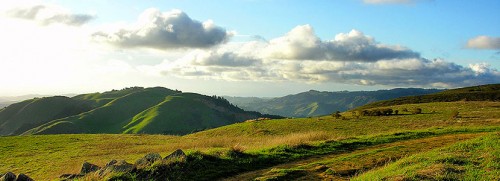
I’ve been very active with the Midpeninsula Regional Open Space. It’s a group that manages 64,000 acres of open space, of wild forests on the San Francisco peninsula.Over five years, I’ve been trying to get them to appoint a chief scientist and have an independent scientific mission to create baseline inventory and survey of the habitats and species, to build policy on. After five years of negotiation, just this week, they just approved a whole scientific program to build a baseline understanding of the habitats and species in all of the open space property. It’s a week of a quiet personal victory I’m celebrating. I got into it originally trying to explore, what really is going on with pesticides? I started understanding the molecular chemistry of the root systems, that things like Roundup work on. I found that groups were sampling whole microbiome habitats. They do something called environmental DNA. They sample the health of all the microorganisms in a soil sample. That came from trying to understand pesticides. Since then, I recommended that they use techniques like environmental DNA. They’re already doing it at a research laboratory over here near Stanford, called Jasper Ridge. If you sample a cubic volume of soil, you can get inventory of all the species. Not just the microorganisms, but raccoons, mice, bobcats, mountain lions, birds. There’s genetic materials for all of them. It’s an exciting new way to monitor and inventory the health of a habitat. It implies there’s a possible future for citizen science, where people can actually go out and help an institution, like a massive forest preserve, take samples and better understand the ecologies of all the different microbiomes.






